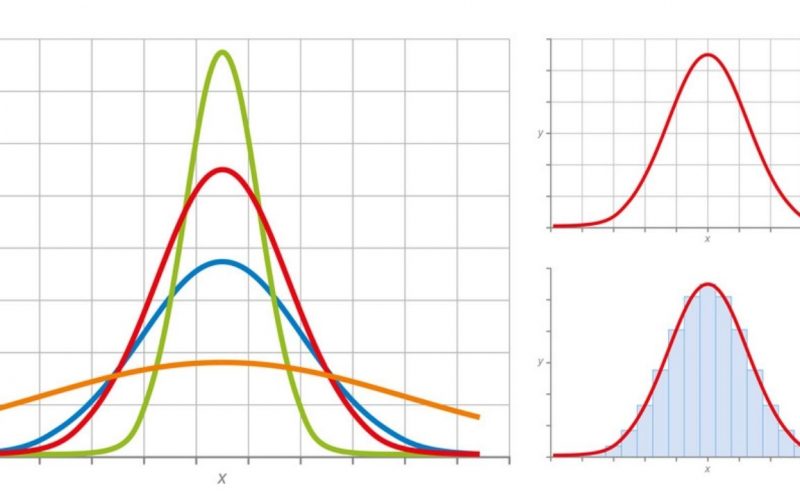In economics, the word isoquant is derived from the Greek origin, ‘iso’ which means equal or same, and ‘quant’ meaning quantity. Find out more about this topic, and how you can apply this knowledge in your business as you read through this article.
Let’s start with the basics. “What is Isoquant?”
What is an Isoquant?
An isoquant (derived from quantity and the Greek word iso, meaning equal. In microeconomics, it is a contour line drawn through the set of points at which the same quantity of output is produced while changing the quantities of two or more inputs.
An isoquant’s contour line reflects any combination of two inputs that fully maximizes a company’s resource utilization (such as budget, or time).
The full utilization of resources is commonly referred to be “efficient.” If a company produces to the left of the contour line, it is considered inefficient since it is not making the best use of its resources.
A company cannot produce to the right of the contour line until its limits are exceeded. There are authors who explained what isoquant means in different but related terms.
Some of these authors explained isoquant in the following ways:
- According to Ferguson, “An isoquant is a curve showing all possible combinations of inputs physically capable of producing a given level of output”
- In the words of Peterson, “An isoquant curve may be defined as a curve showing the possible combinations of two variable factors that can be used to produce the same total product”
Isoquant or “ISO” product curves are used by modern economists to determine the best factor combination for producing certain units of a commodity at the lowest cost.
An isoquant may also be known as an “Iso-Product Curve”, or an “Equal Product Curve.
READ ALSO: Trade Finance: Overview, Definition, Course, Examples
Isoquant Curve
According to Investopedia, an isoquant curve is a concave-shaped line on a graph, used in the study of microeconomics, which charts all the factors, or inputs, that produce a specified level of output.
This graph is used as a metric for the influence that the inputs most commonly, capital and labor have on the obtainable level of output or production.
They are often used in Microeconomics as a measure to analyze the most commonly researched inputs of capital and labor, as well as their impact on production.
The isoquant curve assists companies and businesses in making adjustments to inputs to maximize production, and thus profits.
The isoquant curve illustrates the marginal rate of technical substitution, which displays the rate at which one input can be substituted for another without increasing the level of the resulting output.
Isoquant curves have seven essential traits in common. These traits include the inability to be tangent or cross one another, the tendency to slope downhill, and the placement of those expressing higher output higher and to the right.
The creator of the isoquant curve is unknown, as important as it is to economic theory, it has been attributed to various economists.
Ragnar Frisch appears to have coined the term “isoquant” in his lecture notes on production theory at the University of Oslo in 1928-29. Whatever its roots, the isoquant graph was widely used by manufacturers and industrial economists by the late 1930s.
READ ALSO: Return on Equity: Meaning, Formula & How to Calculate (+Quick tools)
Features of an Isoquant Curve
There are several features of an isoquant curve and they include:
- The isoquant curves are distinguished by their negative slope or downward slope. This quality is in agreement with the Marginal Rate of Technical Substitution notion when it comes to technical substitution (MRTS). A company, for example, may be able to maintain the same level of output even if its capital inputs increase but its labor inputs decrease.
- The MRTS phenomenon causes an isoquant curve to be convex to its origin, demonstrating that manufacturing variables can be substituted for one another in the manufacturing process.
- Isoquant curves cannot be tangent or overlap one another. Furthermore, intersecting curves are incorrect and produce incorrect results since a common factor combination on each curve would produce the same conclusion.
- Isoquant curves in the upper sections of the graph have higher outputs than those in the lower regions. This is owing to the fact that production factors are used more intensely at the top of the curve.
- The rate of technical substitution will be rendered null and illegitimate if the isoquant curve crosses either the X-axis or the Yaxis of the graph in any way.
- Although isoquant curves do not have to be parallel to one another, there can be differences.
- Isoquant curves have an oval shape, allowing businesses to determine which production parts are the most efficient.
READ MORE: Predictive Analytics Tools and Software: Best 15+ Tools
Isocost and Isoquant
An Isocost and Isoquant are two decision-making parameters for regulating the production of any industry.
Isocosts and isoquants can demonstrate the best combination of production parameters to provide the most output at the lowest cost.
An isoquant depicts all possible combinations of elements that result in a specific output. All combinations of factors that cost the same amount are represented by an isocost.
Isocost curve is the locus traced out by various combinations of L and K, each of which costs the producer the same amount of money (C ).
For a specific range of products that they produce, every businessalso has some level of planned expenditure management.
If they want to stick to a specific production budget, they can adjust the factors of production by increasing their labor (with a compensating effect on the capital) or growing the capital (with a compensating effect on the labor).
The cost remains constant in each of the two possibilities. Frequently referred to as the budget line or the maximum amount of money that can be deducted from a production budget.
As a result, the production elements, particularly labor and capital, have a cross-subsidizing influence on one another.
If the budget is fixed, whenever one increases, the other must drop. Isocost is a line where a constant cost is assumed for a mix of labor (L) and capital (K) in a corporation.
READ ALSO: Leveraged Buyout Model: Definition, Types & Examples
Slope of Isoquant
At any location, the slope of an isoquant equals the slope of a tangent line. The marginal rate of technical substitution is the slope (MRTS). It informs the company how much capital is required to replace one unit of labor in order to sustain output.
The slope of an isoquant represents the rate at which input x can be substituted for input y. This concept is the MRTS, so MRTS=slope of the isoquant. Thus, the steeper the isoquant, the higher the MRTS. Since MRTS must diminish, isoquants must be convex to their origin.
The isoquant slope reflects the relative prices of the two factors of production. Point A, where the isoquant is tangential to the isocost line, shows the least-cost combination of inputs for producing 100 units of input.
READ ALSO: What is a Reverse Auction: A Comprehensive Guide for Complete Mastery
Types of Isoquant
The following are the most common types of isoquant in production:
#1. Linear Isoquant
It’s a straight line isoquant that demonstrates perfect substitutability between the production function’s inputs, capital, and labor.
This isoquant evinces that a given commodity can be produced by using only capital or only labor or by an infinite combination of and labor and capital.
At point – A on the isoquant level of output can be produced with capital alone (which means without labor).
It indicated perfect and unlimited substitutability between two factors. This implies that the product may be produced using only capital or labor or by infinite combinations of the two factors.
#2. Smooth and Convex Isoquant
When one of the factors of production may be constantly substituted by the other in a two-product framework, we get a smooth and convex isoquant.
Because the points on the isoquant are so close together, it’s called a ‘smooth’ isoquant. The effect of a modest drop in one element of production can be balanced by a marginal increase in the other if the points on the isoquant are close together.
READ MORE: What is B2B Sales? 15 Best Strategies for B2B Sales Lead
#3. L-Shaped Isoquant
This is a situation where perfect complements are required. Under this system, capital and labor are combined in a fixed proportion.
With a fixed proportion of inputs, only one combination of labor and capital can produce a product.
In order to improve production, a company must raise both inputs correspondingly. The fixed factor proportion isoquant graphical depiction is in the shape of an L.
What is slope of isoquant?
As the marginal rate of substitution, the slope of the isoquant is referred to. The slopes and forms of various isoquants are shown. An isoquant’s shape is tightly correlated with the properties of the production function that converts the two inputs into the output.
What is isoquant and isocost?
An isoquant displays all possible combinations of variables that result in a certain output. All combinations of components with the same cost are displayed using isocost. The ideal combination of production parameters to yield the greatest possible output at the lowest possible cost can be demonstrated by isocosts and isoquants.
What is isoquant formula?
It is possible to achieve a single (iso) level of production by combining labor and capital in an efficient manner, as shown by the isoquant curve (quantity). • The isoquant equation is q = f. (L, K).
What is the difference between an isoquant and an indifference curve?
The isoquants represent the combination of inputs that the firms utilize to generate a specific output level. On the other hand, the indifference curve demonstrates how to combine the goods into a package that will still satisfy the consumer to the same extent.
What is called isoquant?
A contour line formed across a set of locations where the same quantity of output is produced while changing the quantities of two or more inputs is called an isoquant (derived from quantity and the Greek word iso, meaning equal).
What is the isocost line?
An isocost line depicts all permutations of a firm’s production components that have the same overall cost. Factors of production are often divided into two categories: labor (L) and capital (K) (L).
What is an isocost function?
The isocost line shows the overall cost C as a fixed value for all K-L combinations that satisfy the equation. An isocost line “displays the various combinations of production elements that may be used for a given total cost.”
Bottom Line
I hope this article carefully explains what an isoquant curve is and how you can apply its knowledge to your business. If you also have any questions or suggestions, kindly let me know in the comments section.
Good luck!
Recommendations
- Saas Sales: Ultimate Guide to The Saas Sales Process and Metrics
- Close Corporation: Overview, Definition, Comparisons, Pros & Cons
- Strategic Alliance: Types & Examples in 2021
- Inbound Marketing vs Outbound: How to Scale any Business Combining both Strategies
- BUSINESS PORTFOLIO ANALYSIS: Overview, Templates & How to Make One
- Corporate Strategy: Levels of Corporate Strategy, Jobs With Examples
- Marketing Myopia: Definition and How to Avoid it
References







